Interest Rates in April 2025: What You Need to Know Now
Explore how interest rates in April 2025 are shaping loans, savings, and investments. Stay informed on economic trends!
April 2025 brings new shifts in interest rates. Here’s how it affects you.
Interest rates play a critical role in how economies function and how individuals manage their money. In April 2025, these rates are once again in the spotlight, influencing everything from home loans to credit cards and savings accounts.
As inflation continues to adjust and global markets respond to various pressures, the choices made by central banks are becoming increasingly significant.
Whether you’re planning to borrow, save, or invest, understanding the current landscape of interest rates can help you make smarter financial decisions.
In this article, we break down what’s happening with interest rates this month, why they matter, and how you can adapt to the changes.

Shifting Rates, Changing Strategies
April 2025 marks a transitional moment in global monetary policy. Central banks, including the U.S. Federal Reserve, the European Central Bank (ECB), and the Bank of England, are navigating complex environments shaped by persistent inflation, slowing growth, and geopolitical instability.
After months of high inflation and elevated interest rates, several institutions are beginning to cautiously reduce their key policy rates. In the U.S., the Federal Reserve has hinted at a potential rate cut later this quarter if inflation shows consistent moderation.
For now, the federal funds rate remains at 4.75%, holding steady as the Fed evaluates data on employment and consumer prices.
Meanwhile, in the Eurozone, the ECB continues to take a patient stance. Although inflation has declined in many member states, the ECB has opted to maintain its main refinancing operations rate at 4.0%, signaling that it prefers a gradual approach to rate reductions. Similarly, the Bank of England is maintaining a cautious tone, with its base rate sitting at 5.0%, reflecting concerns about underlying price pressures and wage growth.
Borrowers Face New Opportunities and Risks
For borrowers, interest rate trends in April 2025 offer both potential relief and lingering challenges. Mortgage rates have edged slightly lower in many regions, offering a modest window for refinancing.
Fixed-rate loans are gaining popularity once again, as consumers look to lock in lower rates before future uncertainty.
However, access to credit remains tight. Banks and lenders are still cautious, and loan approvals often come with stricter conditions than seen in previous years.
Credit card interest rates are staying high, averaging over 20% APR in many countries, which means consumers carrying balances could continue to face heavy interest charges.
If you’re considering taking out a personal loan or refinancing existing debt, now may be a good time to shop around and compare terms. Acting before major rate cuts or hikes can help you secure better conditions and avoid surprises.
Savers Are Still Earning More — For Now
The good news for savers is that interest rates on savings accounts and certificates of deposit (CDs) remain relatively high.
Some banks are offering annual percentage yields (APYs) of 4.5% or more on high-yield accounts, making this a rare moment in which saving cash earns tangible returns.
However, as central banks move toward rate cuts later in the year, these rates may begin to decline.
If you’ve been holding off on locking into a CD, this could be your opportunity to secure a higher rate before the landscape shifts again.
Money market funds are also seeing increased attention as short-term yields remain attractive and offer relatively low risk.
Investors Adjust Portfolios Amid Interest Rate Volatility
For investors, interest rates in April 2025 are a signal to reassess portfolio strategies. Bond markets are responding to shifting expectations around central bank policies.
Longer-term government bond yields are slowly declining, reflecting predictions of easing monetary policy in the near future.
Equity markets are mixed. Some sectors, such as technology and consumer goods, are rebounding as lower borrowing costs become more likely. However, high-dividend stocks may see less enthusiasm as investors turn to fixed-income alternatives offering competitive yields.
Diversification remains key. A blend of stocks, bonds, and cash-equivalent assets can help protect your wealth against volatility as the interest rate environment continues to evolve.
Conclusion: Eyes on the Economy
Interest rates in April 2025 are telling a story of economic recalibration. Central banks are carefully weighing their next moves, while borrowers, savers, and investors adjust to a landscape that may shift quickly in the months ahead.
By staying informed and proactive, you can turn this transitional period into an opportunity. Whether you’re managing debt, growing savings, or building a long-term investment strategy, understanding how interest rates shape your financial environment is more important than ever.







